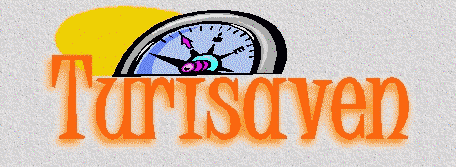|
PASOCHOA RESERVE (1 day any time with lunch) 40 minutes south of Quito, lies the Pasochoa an inactive volcano whose slopes sustain a substantial bird population encompassed by a rich environment of singular plant life, that offers a unique experience for those interested in Andean birds. There are several nature trails that provide easy access to secondary and primary forest. COTOPAXI VOLCANO NATIONAL PARK(1 day any time with lunch) Travel South through the "Avenue of the Volcanoes" we arrive to the base of the mighty Cotopaxi, the world's highest active volcano (19,348 ft). Although the paramo zone (11,500 ft. snow-line) is not as rich in bird life as are the lower altitudes, few will want to miss the chance to see the Andean Condor, the graceful Andean Lapwing, the elusive Carrunculated Caracara, still lagoons, whistling gorges and lovely dwarf wildflowers and lichens. ECUADOR NATURAL PARADISE (10 days) Even though Ecuador is the second smallest country in South America, we are very proud to have the highest number of National Parks, Ecological Reserves and protected areas in relation to our small territory consequently, we suggest you the following program that will include a visit to some natural areas which are still unexplored. Day 1. - Reception at the airport in Quito and transfer to the hotel. Overnight. Day 2. - Breakfast. Early morning we'll drive 44 miles south of Quito in order to visit The Cotopaxi National Park, which is 82,514 acres big; the Cotopaxi is the highest active volcano in the world, covered handsomely with permanent snow-caps on top of the crater. Several nearby lakes and streams are ideal sites for observing the local fauna. In the paramo forest we could see condors, blue-billed pointed ducks, Carrunculated Caracara, Andean gull, doves, hummingbirds. So far as mammals are concerned, rabbits, white.-tail deer, paramo wolves, pumas, bears, foxes, weasels etc. A great part of the park is occupied by paramo areas, where gentians, lycopodiums, almohadillas, and obtrusive valerian, loricarias and chuquirahua grow. Lunch. Dinner and overnight at our camp. Day 3. - Breakfast. Full day activities in order to enjoy more of this beautiful National Park. Lunch. Late afternoon return to Quito for overnight. Day 4. - Trf. to the airport to take the flight to Machala. Is 1 ½ hr from Machala, the "Banana Capital of the World" lies a mysterious testimony to a remote marine life with giant ferns, trees and, who knows even petrified dinosaurs, within an area of 6,570 acres and at 1,180 ft. above sea level. En route, vast banana, coffee and cocoa plantations as well as immense shrimp ponds among lush mangroves lead you to this unique natural area known as the "Puyango Petrified Forest", which contains the world's largest collection of trees, plant and animal fossils which are over 70 millions years old. If you are interested in birdwatching, here you could find around 130 species of birds. Lunch, dinner and overnight in this beautiful natural area. Day 5. - Breakfast. Full morning visiting more of this natural protected area in order to discover more of our pre-history. Lunch. In the afternoon we will drive to Loja for dinner and overnight. Day 6. - Breakfast. Full day visit to the Podocarpus National Park which is located between Loja and Zamora provinces. Podocarpus is 361,341 acres big. This National Park has more than 100 lakes left by ancient glaciers. There are also many crystal clear streams and waterfalls. In our walks that can last many hours or days we will enjoy the beautiful landscapes, orchids and birds. Lunch, dinner and overnight in our camp. Day 7. - Breakfast. We will enjoy more of this National Park. The typical sierra fauna is varied in these extensive forests. The mammal world is represented by pumas, spectacled bear, fox, paramo wolves and deer, while the tiger heron, torrent duck, turkey, cock of the rock, toucan, parrot, woodpecker and hummingbird represent the birds. The park was created to protect the large population of two species of Angiosperms: Podocarpus rospiglios and Podocarpus oleifolius, species which have given their name to the park. The vegetation corresponds to the low, mountain rain forest and is an ideal site from which to observe orchids and wild flowers. Lunch, dinner and overnight in our camp. Day 8. - Breakfast. Full day exploring more of this beautiful protected area. Lunch. Late afternoon we will go to Loja for dinner and overnight. Day 9. - Breakfast. Early morning transfer to the airport to take the flight back to Quito. Free day in Quito. Overnight. Day 10. - Breakfast. transfer to the airport to take the international flight or extension program (we suggest the Galapagos National Park).
|
